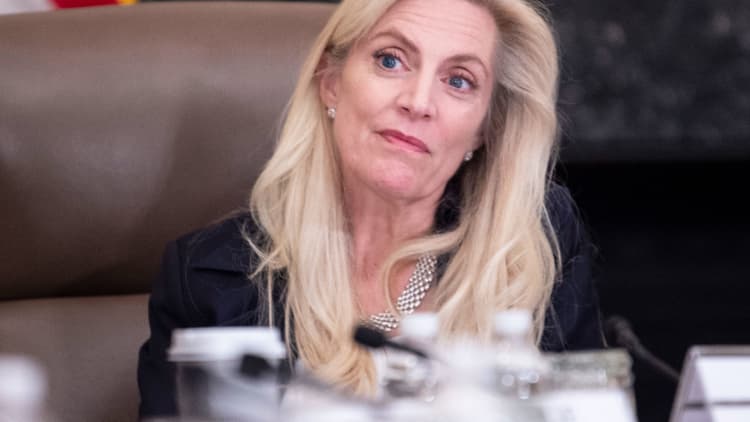Some states still haven't begun paying a $300 weekly boost to unemployment benefits, more than two months after the Trump administration created the subsidy.
President Donald Trump signed an executive measure on Aug. 8 authorizing states to disburse up to $44 billion in federal disaster-relief funding to unemployed workers as part of a Lost Wages Assistance program.
The program gave a $300-a-week federal increase in benefits for up to six weeks, following the expiration of a $600 weekly enhancement in late July.

Alaska and New Jersey
Alaska and New Jersey haven't yet started paying the aid to workers, state officials confirmed. They appear to be the last states to issue the payments.
Alaska will begin disbursing the financial assistance this week, according to Cathy Muñoz, deputy commissioner of the state's Department of Labor and Workforce Development.
More from Personal Finance:
She waited half a year for her unemployment benefits
This comic wasn't eligible for the $300 unemployment boost
Americans face long wait for help if stimulus talks fail
The New Jersey Department of Labor is processing the $300 payments and expects to issue the money this week, an agency spokeswoman said.
Other states, like Nevada and Wisconsin, started paying the aid just last week, according to state officials.
The wait for extra money means thousands of jobless workers have subsisted only on their state-level unemployment benefits — which, in many states equate to less than the federal minimum wage — for several weeks.
Delays in $300 unemployment
Delays are largely attributable to sluggish state administration, which has been hampered by antiquated, decades-old technology and an elevated level of jobless claims.
More than 25 million workers remain unemployed, according to U.S. Labor Department data. More than 730,000 workers are collecting benefits in Alaska and New Jersey through various programs. (The vast majority are in New Jersey.)
Nearly 1.3 million Americans filed a claim for benefits last week, between state and federal unemployment programs — more than six times the level during the same period last year.
The months-long wait for some workers also conflicts with an initial timeline from Trump administration officials such as White House economic advisor Larry Kudlow, who had telegraphed a wait of about one to two weeks.
In the case of the $300 Lost Wages Assistance payments, states essentially had to build a new system from scratch. The new federal program came with rules and requirements that state officials had to decode and then translate into their technology systems.
For example, workers with a weekly benefit amount below $100 a week aren't eligible for the subsidy, leaving out hundreds of thousands of people. State officials had to determine how to account for that restriction.
States also had to apply to the Federal Emergency Management Agency for Lost Wages Assistance. Some took longer than others to do so. New Jersey was among the last to receive FEMA approval, on Sept. 4.
Months of waiting
The wait for $300 payments, which are available to workers who were unemployed between the weeks ended Aug. 1 and Sep. 5, mimics long delays seen earlier in the pandemic.
It took about a month for all states to start paying the prior $600 weekly boost, which was enacted by the CARES Act federal relief law in late March.
Many self-employed, gig, freelance and other workers typically ineligible for state unemployment benefits had to wait even longer to get benefits through a new Pandemic Unemployment Assistance program, also created by the CARES Act.
Workers who applied for benefits months ago — some more than six months ago — are still waiting to receive aid.
Some states were able to disburse Lost Wages Assistance relatively quickly.
Arizona, the first state to start paying the subsidy, made payments beginning Aug. 17, just a week and a half after program was created. Nearly half had begun issuing the aid by mid-September.


